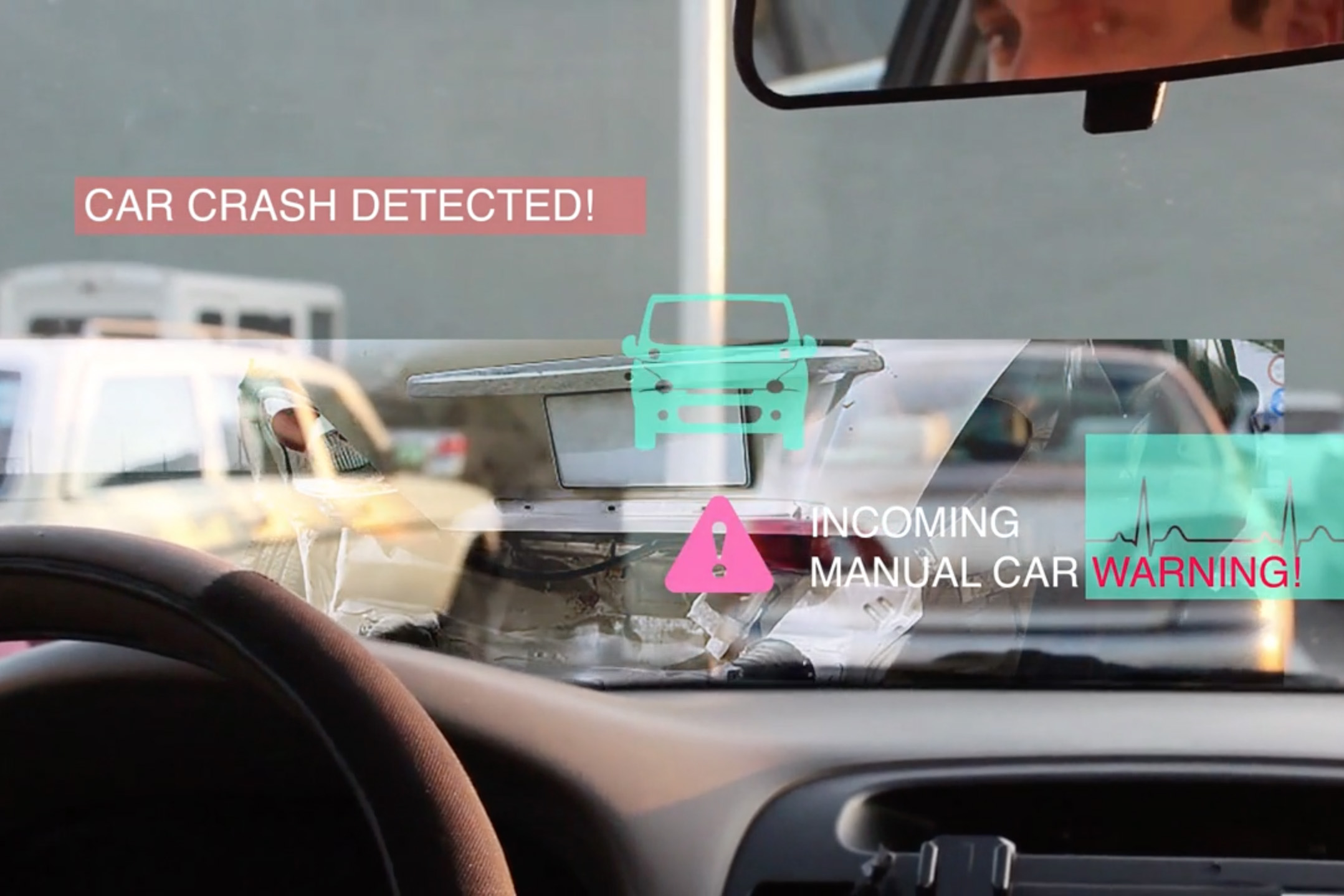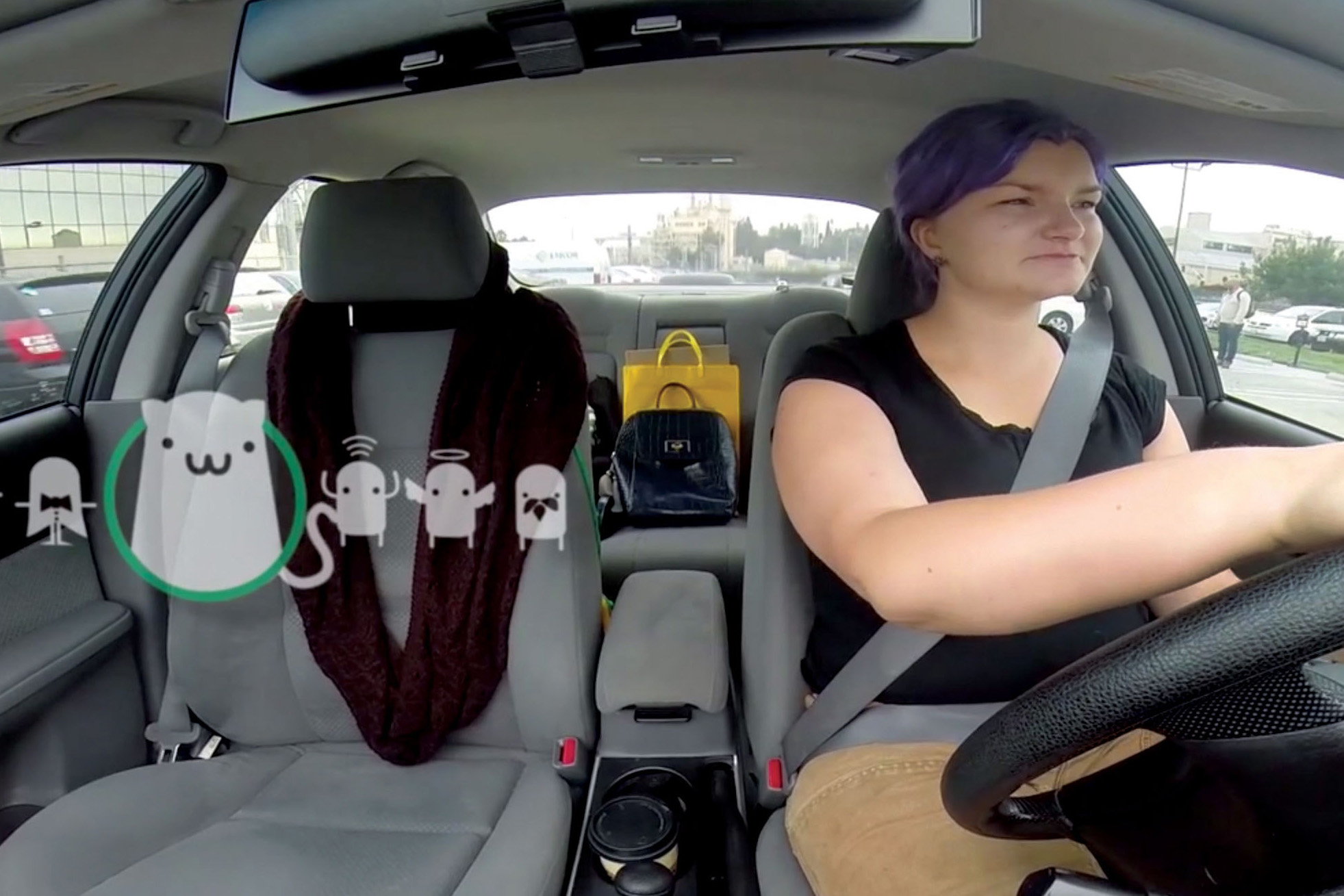feature / alumni / faculty / students / interaction-design / transportation-design / sponsored-projects
June 19, 2015
Writer: Mike Winder
ArtCenter students pave the road into the future of autonomous cars
In On the Road, Jack Kerouac wrote, “What is that feeling when you’re driving away from people and they recede on the plain till you see their specks dispersing? – it’s the too-huge world vaulting us, and it’s good-bye. But we lean forward to the next crazy venture beneath the skies.”
But what does it mean when that “next crazy venture” is fueled by a set of algorithms?
As we’ve previously reported, the arrival of autonomous cars could very well usher in a new era of safer roads. But might the public be hesitant to hand over the keys of their vehicle–often seen as a bedrock American symbol of freedom–to Apple, Google or Uber?
The promise of the automobile 100 years ago was being able to go anywhere, anytime. This idea freed people from structuring their lives around stagecoach or train schedules and opened up a world of new experiences.
Stewart Reed Chair, Transportation Design

“The promise of the automobile 100 years ago was being able to go anywhere, anytime,” says alumnus Stewart Reed (69), chair of ArtCenter’s transportation design programs. “This idea freed people from structuring their lives around stagecoach or train schedules and opened up a world of new experiences.”
What wasn’t the promise 100 years ago? Moving 11,700 vehicles an hour at peak times through the Sepulveda Pass.
Geoff Wardle, executive director of the College’s graduate Transportation Systems and Design program, believes people’s affection towards cars does not necessarily translate to an affection towards driving.
“I think the majority of people would be very happy to give up driving their daily commute,” he says.
And while hours spent idling on the freeway is about as far removed from the Beach Boy’s “Fun, Fun, Fun” as you can get, there’s a generational shift in how young people feel about cars that goes beyond a dislike of lengthy commutes.
The Department of Transportation’s Beyond Traffic 2045 framework notes the total number of licensed drivers under the age of 34 declined between 2001 and 2012, despite an increasing population; and that more millennials value access to their phone than to their car.
“Many coming-of-age rituals—Now I have freedom, now I have contact with people—are now experienced through smartphones,” says Maggie Hendrie, chair of the College’s Interaction Design program.
ArtCenter instructor Pamela Blackwell cites the “new urbanism” movement as another major factor. Blackwell teaches Transportation Histories and Futures, a course in which students examine the bigger picture of how people travel from point A to point B, especially in terms of their daily lives.
“Suburbia is a construct and it hasn’t worked,” says Blackwell of the shift, pointing out that in cities like New York, Paris or San Francisco all classes of people rub elbows by taking public transportation, while in Los Angeles, a barrier was created when the middle class abandoned the inner city. “But we’ve seen that’s not sustainable, so with ‘new urbanism’ we’re starting to see some changes downtown.”
However, as Reed points out, even as cities like Los Angeles begin to reimagine how they should function and their citizens gravitate toward alternative modes of transportation, there’s no question that the car—in some form or another—is here to stay.
“If life isn’t about the destination but about the journey, then that’s still going to be the promise of the automobile, autonomous or otherwise,” says Reed, who points out that there will always be individuals who enjoy the experience of getting beyond the wheel and that driving is about much more than getting from point A to point B.
That was one just one of several issues investigated in the recent Jaguar Land Rover- and Intel-sponsored New Car Experiences studio class: when cars drive themselves, what are the new ways in which automakers will make their vehicles stand out?
Reed says the importance of carefully thought-out interiors–with special attention to materials–will continue to grow during an autonomous era. He also points out that an automaker’s brand will have to extend even further beyond the vehicle itself.
“The ultimate autonomous car experience should feel like you’re being driven around by the most knowledgeable family chauffeur,” says Reed, adding that the vehicle could anticipate your needs and suggest diversions, like stopping at a nearby art gallery to see a show. “That would open up all kinds of possibilities for automakers to differentiate their vehicles.”





